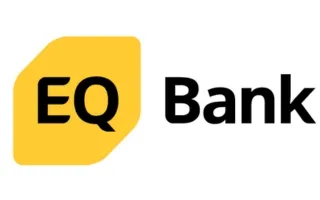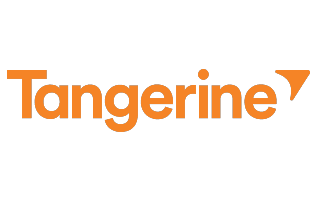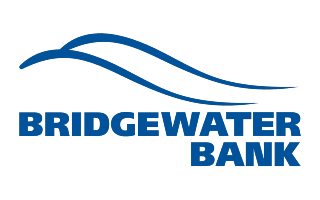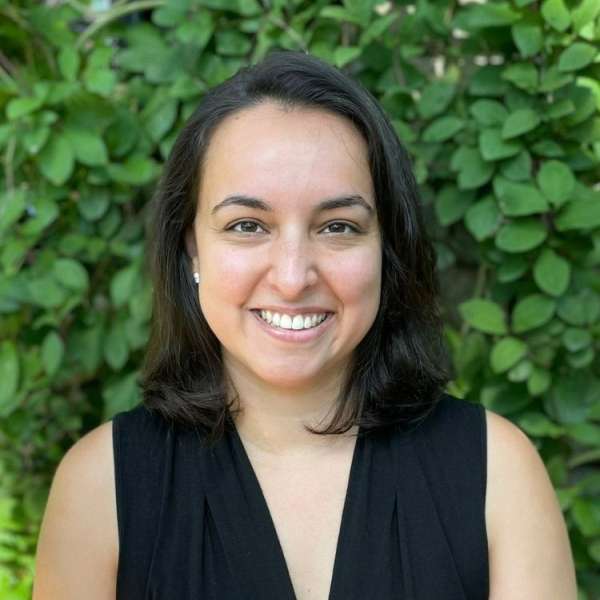With the cost of living rising sharply over the past year, around 40% of Canadians report spending less on travel and big-ticket items. But if you dream of owning a home someday or need to buy a new car soon, starting to save now can help you reach your goals. Here’s how to save for a big purchase.
How to save for a big purchase
Whether you’re saving for a home, car, wedding, school or another big expense, here are 5 steps you can take to save the funds you need.
Determine what you can afford
Research the market to find the item you want. If the price seems out of reach, look at variations that can cut down the cost. If you want to buy a car, look at used models on sites like AutoTrader or Canada Drives. If you’re paying for a wedding, consider a destination wedding with fewer guests or a less expensive off-season wedding.
Get a realistic view of your finances including recurring expenses and one-off costs you expect to shoulder in the future. Line this up with your income to figure out what you can realistically afford to save each month. Consider any existing savings you have as well as investments and other sources of side income.
Set a goal
Based on what you can afford to save each month, pick a deadline by which you want to have saved the amount you need. Consider the timeline for your expenses. When will you need to make a down payment? If installment payments are due, when do these need to be made?
Make a budget
Create a spreadsheet to map out where your money will go including all the costs you expect to pay. If you don’t know where to start, try the zero-based budgeting method in which you put every dollar of your income toward a specific expense or savings goal until there’s nothing left over.
Don’t forget to account for less obvious expenses like car maintenance, property taxes, ancillary wedding expenses (invitations, hotel accommodations, service charges and tips) etc.
To use the zero-based budgeting method, start by adding up your mandatory monthly expenses and subtracting this amount from your monthly income. Then take anything leftover and put it toward fun expenses or savings.
Cut back where you can
Trim down your expenses and free up more for savings by limiting eating out, vacations and buying new toys. When shopping around, ask for discounts and negotiate with sellers. Stay local to avoid travel costs.
Pay off debt
You’d be surprised how much disposable income you can free up when you’re no longer making debt repayments. The benefit of paying off debt is twofold: Less debt means more money for savings, and your debt-to-income (DTI) ratio will go down.
Your debt-to-income ratio represents the proportion of your income going to debt repayment and is a sign to lenders of how much you can afford to borrow. This is crucial if you plan to take out a loan to finance your purchase or get a mortgage. Aim for a DTI ratio of 36% or lower.
Contribute regularly to a savings account
A good way to grow your money with little effort is to make regular contributions to a high-interest savings account. Look for an account with a high-interest rate, low fees and a minimum deposit you can meet. If you’re making a big purchase with a partner, consider opening a joint savings account, so you can save and earn interest together.
Take advantage of automatic deposits, roundups and any other features that automate your contributions to snowball your saving efforts even more. Treating your contributions like a mandatory expense will help make saving a habit.
Types of accounts to save
Depending on your goals, there are different types of accounts you can use to grow your money
Regular savings accounts
Savings accounts usually offer low balance requirements, low monthly fees and interest ranging from 0.10% to over 2.00% APY. Traditional savings accounts offered by established banks may give you more ways to access your money, but savings accounts from online banks often come with the highest interest rates.
Interest-bearing chequing accounts
Some chequing accounts actually let you earn interest on your balance, although the amount is usually smaller than what you could earn with a savings account. Unlike a savings account, you can withdraw from a chequing account more frequently without paying a fee. You can also link your chequing account to a debit card, making it easy to access your funds if you unexpectedly need to.
Guaranteed Investment Certificates (GICs)
Once you have $500 or more saved, consider a GIC to lock away your money for a fixed term while it earns interest. Depending on the amount and term length, you could earn anywhere from 1-4% APY. However, you usually can’t add money to your GIC during the term, and you’ll pay a penalty to withdraw funds before the maturity date.
Registered Retirement Savings Plan (RRSP)
A RRSP is a long-term investment account designed to save for the future — in this case, old age. Money in RRSPs grows tax free and contributions are tax deductible. You’re taxed on withdrawals.
If you withdraw money before 71 years old, you’ll be heavily taxed. But there are 2 exceptions to this: The Lifelong Learning Plan and the Home Buyers’ Plan.
Registered Education Savings Plans (RESPs)
A RESP is a long-term investment account that lets people save for a child’s education. Contributions are not tax deductible. Money deposited into an RESP grows in several ways:
- Funds are put towards either fixed investments (short-term bonds, GICs and investment savings account) or equity investments (stocks and mutual funds). Interest earned on these investments is not taxed.
- Through the Canada Education Savings Grant (CESG), the federal government matches annual RESP contributions by 20% if the the future students receiving the funds are 17 or younger. The CESG applies on the first $2,500 of annual contributions (or $5,000, if unused contribution room from previous years is carried forward) up to a lifetime limit of $7,200.
- Through the Canada Learning Bond (CLB) program, children from low-income families will get up to $2,000 in RESP contributions from the federal government. This is not a matching program; no personal contributions are necessary to get the CLB.
RESPs aren’t just for tuition. Funds can be used for housing, books, laptops, transportation, meal plans and more. You can open more than one RESP account for a child, but he or she can only receive up to $50,000 from all RESPs combined.
Finder survey: How much do Canadians from different provinces set aside for savings each month (including all household members and all types of savings)?
Response | Saskatchewan | Prince Edward Island | Ontario | Nova Scotia | Newfoundland and Labrador | New Brunswick | Manitoba | British Columbia | Alberta |
|---|---|---|---|---|---|---|---|---|---|
| $251 to $500 | 22.5% | 18.2% | 17.65% | 33.33% | 19.23% | 10.87% | 20.54% | 17.57% | |
| $0 (no room in the budget) | 20% | 20% | 18% | 17.65% | 22.22% | 19.23% | 15.22% | 11.89% | 20.27% |
| $76 to $150 | 17.5% | 13.11% | 14.71% | 11.11% | 28.26% | 13.51% | 14.19% | ||
| $151 to $250 | 15% | 40% | 14.29% | 23.53% | 23.08% | 15.22% | 17.84% | 12.16% | |
| $501 to $1,000 | 10% | 10.18% | 2.94% | 5.56% | 11.54% | 4.35% | 9.19% | 8.78% | |
| More than $1,000 | 7.5% | 6.26% | 2.17% | 7.03% | 6.08% | ||||
| None of the above | 5% | 20% | 7.05% | 5.88% | 16.67% | 11.54% | 6.52% | 8.65% | 6.76% |
| Up to $25 | 2.5% | 5.28% | 11.76% | 11.54% | 8.7% | 7.03% | 7.43% | ||
| $26 to $75 | 20% | 7.63% | 5.88% | 11.11% | 3.85% | 8.7% | 3.78% | 6.76% | |
| already have a ton in svgs. so not putting away anything | 0.54% |
Can I open a locked savings account?
If the temptation of easy access to cash is hard to resist, you may want to look into a savings option that makes it more difficult for you to withdraw money (before meeting future financial goals, such as retirement or paying for post-secondary education). That’s because traditional savings accounts in Canada, provide relatively easy ways to withdraw or transfer funds out of the account. However, other types of savings plans can help put a temporary block on getting access to your money — preventing you from spending it. Here are the best (temporary) locked savings accounts in Canada:
Guaranteed Investment Certificates (GICs)
A guaranteed investment certificate (GIC) locks your money away usually from one month up to 10 years, while it earns interest based on a fixed or variable interest rate.
GICs are more restrictive than a traditional savings account because you can’t access your money until the term is finished (unless you have a cashable, redeemable GIC with no withdrawal restrictions). If you need to make a withdrawal, you’ll need to provide notification to your financial institution, forego expected earnings and pay a penalty.
Our Top Pick:
1 Year GIC

Our Top Pick:
5 Year GIC

Our Top Pick:
Cashable GIC

Benefits of using GICs as locked savings accounts
There are a couple of key benefits to using a GIC as a locked savings account. First, you can get the security of a fixed interest rate and a guaranteed return on your investment. If interest rates drop while your money is locked away, your savings won’t be affected.
Second, these accounts are set up to discourage you from dipping into your savings balance. You typically can’t access the funds immediately, so any money you deposit is safe from the risk of impulse buying and unnecessary spending.
On the other side of the coin, GICs are not all that convenient if you ever need access to your funds in an emergency, and you also won’t benefit from any interest rate increases until your deposit matures.
What to look for in a GIC-locked savings account
Consider the following features when comparing the pros and cons of a GIC:
- The interest rate. Interest rates can vary greatly between banks and the term you choose. Look around for the best interest rates — but make sure there are no unexpected fees attached.
- How often interest is calculated. Check to see whether interest is calculated on the account daily, monthly, quarterly or yearly. The more often interest is calculated, the more your balance grows.
- Term length. When comparing accounts, evaluate the features of accounts with the same term length. For example, only compare 3-year GICs with other 3-year GICs. If your bank doesn’t offer the term you want, look elsewhere.
- Fees for early withdrawal. If you have a cashable GIC, it’s worth checking what fee you’ll incur if you need to withdraw your money before the term ends.
- Where the interest is paid. Is the interest you earn paid back into the same or different account? Do you need to open a linked account with the same financial institution to receive interest payments?
- Loyalty bonuses. If you want to reinvest your money into another GIC after your first deposit matures, will you be rewarded for your loyalty with a bonus interest rate?
Hard-to-access savings accounts
Savings accounts offer the benefit of compound interest, and they charge minimal or no fees while giving you quick and easy access to your money. Savings accounts also allow you to continually add money to start building your nest egg. Scheduling an automatic transfer into your account each month can quickly build a sizable savings balance.
Some savings accounts offer features to keep you from falling prey to impulse buys. If you have trouble keeping your hands off your savings, consider getting an account without a debit card so that you can’t make withdrawals outside of business hours. Getting an account that doesn’t allow transfers is also a good idea.
As the name suggests, savings accounts are designed to help you save money, not spend it. If you want regular access to your money, use a chequing account.
What to look for in a savings account
Not all savings accounts are created equal. There are a few things to watch out for when signing up for a new account:
- How often interest is compounded? The more often interest is compounded, the more money you’ll earn.
- Minimum balance amount. Banks often have a minimum amount required to open an account. Some banks even have a minimum balance requirement for the life of the account, and you can quickly accrue fees if your balance dips too low.
- Linked account requirements. Some banks will require you to also open a linked chequing account with them to open a savings account. If this is the case, make sure the chequing account is suited to your needs and doesn’t have any hidden fees.
- Hidden account fees. Exorbitant bank fees can quickly defeat the purpose of any interest earned on an account, so read the fine print to make sure you’re aware of any ongoing fees, withdrawal fees or other transaction charges.
- Accessibility. Check to see whether your account can only be managed online or whether you also have branch, mobile banking and phone banking access.
Retirement accounts
If you’re saving up for your retirement, a retirement savings account — also known as a registered retirement savings plan (RRSP) — might be your best option. Any money contributed to an RRSP can only be withdrawn, without a penalty, once you reach retirement age. Early withdrawals will trigger fees and penalties as well as additional tax-owed on the sum.
How to save for big purchases
How to save money for a house
First-time home buyers are eligible for special mortgage rates and tax breaks.
New buyers can often borrow up to 90% or 95% of a home’s value, which means you might only need 5% to 10% of the purchase price as a down payment. But if you borrow more than 80% of a home’s value, you might need private mortgage insurance, which provides the lender protection should you default on your mortgage. Insurance premiums typically range from 0.60% to 4.50% of your mortgage.
The government has programs and tax breaks in place to make it easier to own a home.
First-Time Home Buyer Incentive
If you’re a first-time buyer with a qualified annual income of $120,000 or less, you may be eligible for the First-Time Home Buyer Incentive offered by the government. The incentive is worth 5% to 10% of a newly built home or 5% of an existing home or mobile home – this can help lower the amount you need to borrow.
Home Buyers’ Plan (HBP)
Under the Home Buyer’s Plan, first-time home buyers can withdraw up to $35,000 ($70,000 for couples) from their RRSPs to cover the down payment on a home. The withdrawals are tax-free as long as the money is repaid within 15 years, and you can pay the loan back at any time with no penalties.
First-Time Home Buyers (FTHB) tax credit
Claim up to $5,000 in tax credits on costs associated with purchasing your first home. Associated costs might include land transfer tax, legal fees or disbursements.
GST/HST New Housing Rebate
You can qualify for a rebate to recover part of your GST or HST payments that you paid on the purchase price, on the cost of renovating or adding additions or on converting a non-residential property into a house.
How much do I need to save for a house?
According to the Canadian Real Estate Association, the average house price as of November 2022 was $632,802. But the price varies widely across Canada.
The biggest upfront cost of a home is the down payment, the amount of which depends on the house price:
- For homes that cost $500,000 or less, the minimum down payment is 5%.
- For homes that cost between $500,000 and $999,999.99, the down payment is 5% on the first $500,000 and 10% on the rest.
- For homes that cost more than $1 million, the down payment must be 20%.
For perspective, a 5% down payment on a $635,000 home is $31,750.
How to save up for a car
There are several ways you can save up for a car or vehicle, whether it’s a new-to-you, used vehicle or a new make and model straight off the dealer lot. Here are two tips to help:
#1: Reroute old payments
If you have debts or bills that you’ve paid off, consider rerouting the funds originally earmarked for debt repayment straight into your savings account.
#2: Trade-in or sell
If you already have a car, trading it in or selling it privately can help you get some extra cash that you can put towards the purchase of the next vehicle.
How much do I need to save for a car?
The average cost of buying a car varies from $33,000 to over $39,000, depending on whether you’re buying a used or new vehicle. Buying a SUV, truck or minivan could set you back $38,000 to over $59,500.
If you plan to finance your car, you’ll only need to save for the down payment, which should be 10% to 20% of the purchase price.
Once you own a vehicle, be prepared for ongoing expenses like car insurance (third-party liability coverage is required in all provinces and territories), gas, maintenance, licensing and registration renewal fees. Altogether, these could cost hundreds of dollars each month.
How to save money when planning a wedding
Get one step closer to paying for your big day with these tips for cutting down the cost of a wedding.
- Pick a less expensive month to get married. January, March, April and November are the cheapest months to get married. June and September tend to be the most popular and are therefore more expensive.
- Ask for discounts. Your venue or suppliers may allow you to shave savings off your costs depending on your total guests, weekday, start times and more.
- Use third-party vendors. Look for a venue that allows you to choose your service contractors, such as catering and decor. This will give you more control over quality and costs.
- Get creative with food. Hire a talented friend, make some of the food yourself or ask if your favourite restaurant is willing to take a large order.
- Stay local. Save money on transportation and accommodations by keeping your ceremony and reception in a convenient location.
- Consider a destination wedding. Destination weddings can be smaller than hometown ceremonies. Some people reduce costs even more by having guests pay their travel costs.
- Set up a registry. Your loved ones will want to celebrate by contributing to your new life together. Use your registry to offset the costs of items you know you’ll purchase after the wedding, or look for a cash registry to fund wedding costs directly.
How much does a wedding cost?
According to Theknot.com, the average cost of a wedding in Canada was $21,900 in 2022. In the US, weddings cost $34,000, on average, while a UK wedding will set you back about $19,200.
You could end up spending thousands of dollars more on additional costs like bachelor and bachelorette parties, travel to and from your venues, a rehearsal dinner and — of course — the rings.
Additionally, some venues require wedding insurance, which protects you from financial loss due to wedding interferences like bad weather, property damage, injury and problems with venues or vendors. The cost of wedding insurance ranges from $200 to several thousand dollars.
How to save for an engagement ring
- Start early. The sooner you start saving, the better. Open an account, and deposit funds whenever you can. Use automatic deposits to ensure you make regular contributions.
- Save in a joint account. For some couples, saving up for the ring isn’t the responsibility of just one partner. See if your partner wants to contribute to an engagement ring, and consider opening a joint savings account.
- Save unexpected cash. If you receive a bonus, pay off a debt or cancel a bill, consider rerouting that money into your savings account.
- The $5 bill method. Consider paying for everyday expenses in cash, and stash away your $5 bills each time you get one. You’d be surprised at how much you can save this way.
It’s less expensive to save up and pay cash for an engagement ring, but that may not be possible if you have other expenses or debts to deal with. You can usually finance an engagement ring, but it’ll cost more due to interest.
How much does an engagement ring cost?
There’s an old rule of thumb that says you should spend three months’ worth of your salary on an engagement ring. In reality, many people spend less. In 2021, Weddingstats.org reported that the average cost of a wedding ring in Canada was $3,500. In the US, the amount is higher at $5,500 USD.
How to save money for university or college
Besides saving in an RESP and taking advantage of government matching, you can also get funds for school by withdrawing from an RRSP, saving in an in-trust account, using the cash value of a whole life insurance policy, getting financial aid and applying for scholarships, grants and bursaries.
Lifelong Learning Plan (LLP)
Under the LLP, you can take up to a certain amount out of your RRSP yearly to pay for full-time training or education at a designated institution for yourself, your spouse or your common-law partner (not you or your partner’s children). The maximum yearly withdrawal limit is $10,000 up to a total limit of $20,000. After this, you’ll have to wait a while to withdraw again.
In-trust accounts
An in-trust account (also called an informal trust account) is an investment account opened by an adult for a minor. Once the in-trust account is set up, the minor becomes its sole owner. Unlike an RESP funds held in an in-trust account can be used for anything once the minor reaches the age of majority. Plus, there’s no maximum contribution limit. In-trust accounts can be opened at a bank.
Cash value from a whole life insurance policy
Whole or permanent life insurance policies can protect you and your family, but they can also be used to pay for major expenses. Policies are broken down into two parts: A death benefit amount and a cash-value portion that’s invested and grows over time. After you’ve built up enough cash value, you can borrow from your policy. You aren’t required to repay the loan, but your death benefit may be reduced if you don’t.
Financial aid
Merit-based and entrance scholarships for students usually range from $1,000 to $5,000 per year. Government grants are often $2,000 to $8,000 annually. While some awards are one-offs, others require that students maintain a certain academic performance or continually demonstrate financial need to keep receiving funding. Speak to a financial aid advisor at your college or university to find out what you’re eligible to receive.
Scholarships, grants and bursaries
Often, students assume they need very high grades or that they have to jump through an insane number of hoops to be awarded a scholarship. The majority of scholarships are not merit-based and may not take more than a few hours to apply for.
Several established companies produce robust online databases tracking scholarships and bursaries available in Canada including ScholarshipsCanada.com, Yconic.com, StudentAwards, and canadian-universities.net/Scholarships.
How much should I save for college or university?
If you’re saving in an RESP, a good rule of thumb is to save about $2,500 a year per student, or a little over $200 a month. This is based on the maximum annual contribution that the government will match by 20% under the Canada Education Savings Grant (CESG).
Here’s a rough estimate of what you can expect to pay for one academic year at college and university. These figures are for public institutions. Private schools will cost more.
| University (approx.) | Community college (approx.) | |
|---|---|---|
Tuition & fees | $7,500 | $2,500 |
Textbooks & supplies | $1,200 to $1,800 | $1,200 to $1,800 |
Transportation | $1,100 (public transportation) to $7,000 (own your own vehicle) | $1,100 (public transportation) to $7,000 (own your own vehicle) |
Food & housing | $14,000 to $18,000 | $14,000 to $18,000 |
Miscellaneous | $2,000 to $4,000 | $2,000 to $4,000 |
Total | $25,800 to $38,300 | $20,800 to $33,300 |
Bottom line
Saving for a big purchase can seem intimidating. But you can get closer to your goals by looking realistically at your finances, carefully putting together a budget, cutting back unnecessary expenses, paying down your debt and contributing to a savings account.
Learn more in our detailed guide to savings accounts. If you need a little extra help getting the funds you need, check out our guide on getting a personal loan.
Frequently asked questions
More guides on Finder
-
5% interest on savings accounts: Fact or fiction?
From a 4% to a 5% interest savings account, here’s how to find the best savings rates in Canada.
-
Simple vs compound interest: What’s the difference?
Understand the difference between simple and compound interest with these simple examples.
-
Daily interest savings accounts
Learn how daily interest savings accounts work and where to find the best rate.
-
100 Envelope Challenge: What it is and how it works
We break down the 100 Envelope Challenge, a viral TikTok trend that can help you save money fast.
-
Savings account interest rates
Compare current savings account interest rates so you can grow your savings.
-
RRSP tax guide
RRSPs provide tax benefits to Canadians, such as the RRSP tax deduction. Learn about RRSP taxes in our guide.
-
How to switch banks
Switching banks in Canada has never been easier—follow our guide to save time and money.
-
TFSA Guide: How Tax-Free Savings Accounts Work
Maximize your savings with a TFSA, enjoying tax-free growth, flexible withdrawals and diverse investment options.
-
Best high-interest savings accounts in Canada for June 2025
Compare the best high-interest savings accounts in Canada to build a bigger bank balance.
-
How to save tax in Canada on interest income in a savings account
Savings account interest is taxable in Canada. Find out how taxation works and how to minimize what you owe.


